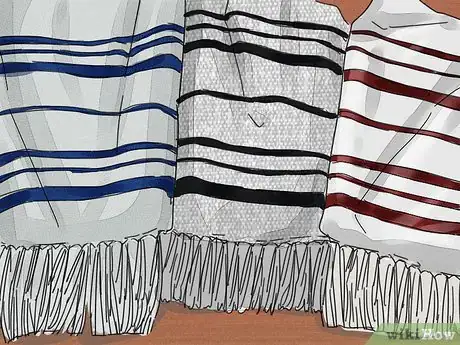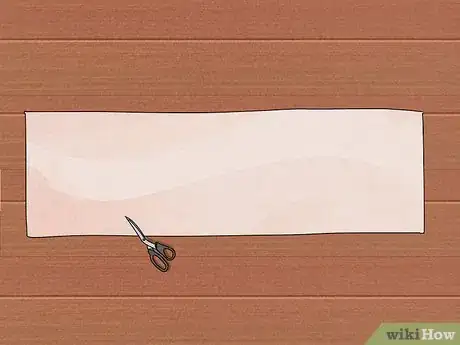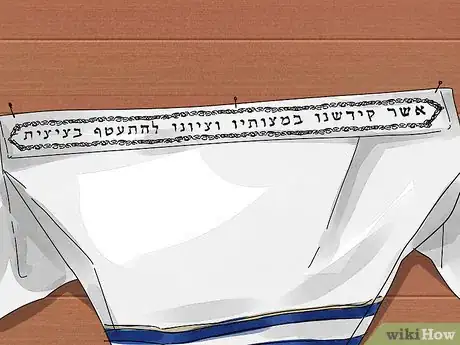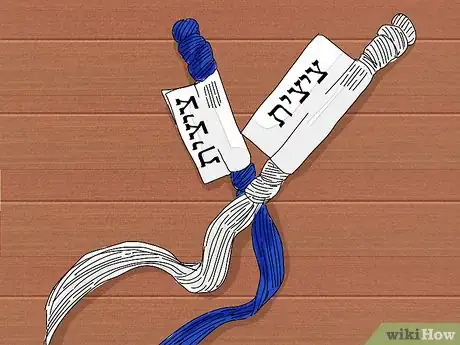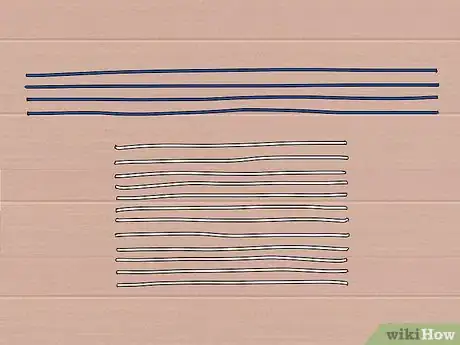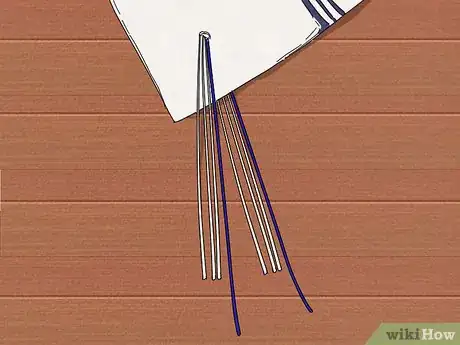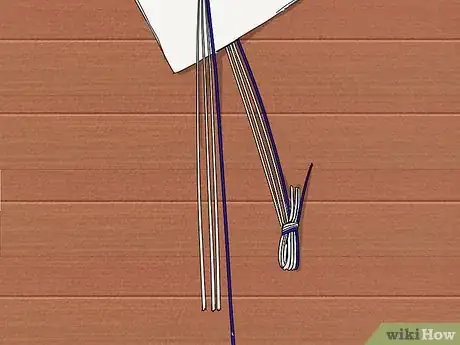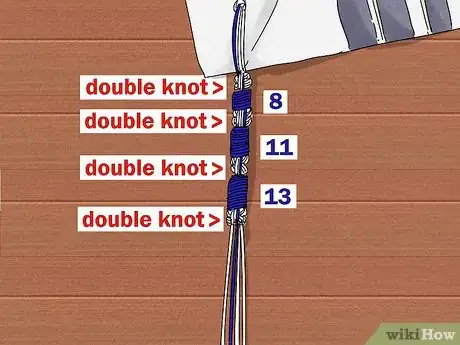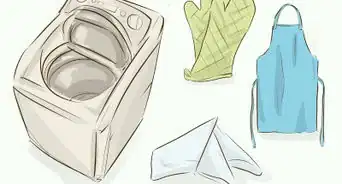X
wikiHow is a “wiki,” similar to Wikipedia, which means that many of our articles are co-written by multiple authors. To create this article, 15 people, some anonymous, worked to edit and improve it over time.
This article has been viewed 43,686 times.
Learn more...
The Tallit, or prayer shawl, is used in Jewish religious ceremonies. The Hebrew Bible, or Torah, contains a commandment to wear tzitzit, or fringes on the corners of ritual garments. It is not the garment itself, but the tzitzit that makes the Tallit special. Tallits are typically made of linen or wool and have a neckband, called an Atarah, which often contains the blessing that you will recite when you put on the Tallit.
Steps
-
1Determine the size of Tallit that you will make. Traditionally, a Tallit extends from the top of the head to the knees, but some extend only to above the buttocks.
- Keep in mind that type of Tallit that will be acceptable in your community or congregation.
-
2Determine the type of fabric. Tallits are normally made out of linen, wool, cotton or silk.
- Keep in mind that, according to Jewish law, wool and linen can't be combined.
Advertisement -
3Cut fabric to the appropriate size. Hem the edges of the cloth, making sure to keep the hems small and not noticeable.
-
4Cut small reinforced holes on the 4 corners, in the middle. Sew the corners.
-
5Choose the quote that will be used on the Atarah. Suggestions for decorating the Atarah include embroidery, applique, batik (a wax-dyeing technique) or beading.
-
6Purchase the special string required for the tzitzit. This can be found online or at Judaica stores.
- Per the mitzvah (commandment) of tzitzit, the color of the thread must be techelet-blue. This is the color of the sky and symbolizes purity. Nevertheless, in most communities, only white strings are used.
-
7Lay out the tzitzit strings on a table or other flat surface. Place the 4 long tzitzit strings in one row and the 12 shorter ones in another.
-
8Stretch 1 long and 3 shorter tzitzit strings side by side, making the ends even on one side.
- Before inserting that side into the prepared holes, quote the "leshem mitzvot tzitzit", meaning "for the purpose of the commandment of tzitzits."
-
9Pull through the 4 ends. Make sure that they are as even as possible with the 3 shorter tzitzit ends on the other side. Make a temporary knot on the end where all 4 tzitzit strings meet together.
-
10Make sure that both ends of the shorter tzitzit strings are even. Tie a double knot near the edge of the cloth near the hole. Wrap the long tzitzit string, or "shamash" around the other three string 7 times, and tie a double knot.
-
11Wrap the shamash around the other tzitzits 8 times and tie a double knot, then 11 times and tie a double knot. Lastly, wrap it around 13 times and tie a double knot. The Sephardic custom is a 10-5-6-5 series of wraps.
-
12Untie the temporary knot to finish your first corner. Repeat the process for the other 3.
Advertisement
Community Q&A
-
QuestionI see that sometimes the decorative face is facing inward, and sometimes it faces outward. Is there a rule or custom about this?
 Community AnswerNo, there is no law or rule about this; it's up to one's taste. The decorative face is to make the performance of the commandments as beautiful as possible.
Community AnswerNo, there is no law or rule about this; it's up to one's taste. The decorative face is to make the performance of the commandments as beautiful as possible. -
QuestionMust the color of the tzitzis be white with a blue thread?
 Community AnswerNo, it can be just white. It's up to you to decide how you want to look.
Community AnswerNo, it can be just white. It's up to you to decide how you want to look. -
QuestionWear can I buy an atara?
 Community AnswerMost Judaica stores will carry these, and one can likely buy one online, or have it custom commissioned from a silversmith.
Community AnswerMost Judaica stores will carry these, and one can likely buy one online, or have it custom commissioned from a silversmith.
Advertisement
About This Article
Advertisement

